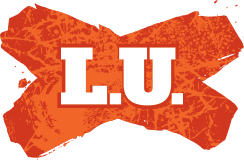Not sure of the truth to this but I once read that originally when 'rugby' broke away from football the idea was still about kicking goals and in order to do this, the attacking team were given an attempt or 'try' at kicking a goal from the point where they crossed the defending ends field of play. Hence the terms "try" and "try line" developed.
As I said, not sure if the truth but makes an interesting thought about the origins of the term try.
Yes, basically true. And in American football, the conversion is a 'point after attempt' or less commonly 'try'.
"Try
After a touchdown, the scoring team is allowed a try during one scrimmage down. The ball may be spotted anywhere between the inbounds lines, two or more yards from the goal line. The successful conversion counts one point by kick; two points for a successful conversion by touchdown; or one point for a safety.
The defensive team never can score on a try. As soon as defense gets possession or the kick is blocked or a touchdown is not scored, the try is over.
Any distance penalty for fouls committed by the defense that prevent the try from being attempted can be enforced on the succeeding try or succeeding kickoff. Any foul committed on a successful try will result in a distance penalty being assessed on the ensuing kickoff.
Only the fumbling player can recover and advance a fumble during a try."
http://www.nfl.com/rulebook/try

